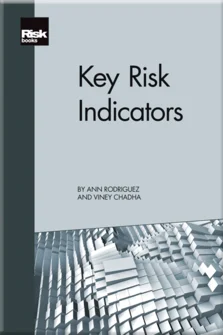Enterprise Risk Management
Enterprise Risk Management
Foundations
Challenges
Culture is Foundational
Enterprise Risk Management
The Enterprise Risk Management Framework
Operational Risk Management
The KRI Framework
The KRI Programme
The KRI Project
Using KRIs
Reporting the KRIs
KRI Assessment Calculator
Case Studies
The Future of KRIs and Closing Thoughts
This chapter will define enterprise risk management (ERM) and the value proposition for ERM as an umbrella function, one that takes a fully integrated approach to aggregate information and provide a balanced basis for business decisions. The backdrop for why ERM has become more important than ever before will also be explored.
WHAT IS ENTERPRISE RISK MANAGEMENT?
According to the Committee of Sponsoring Organizations of the Treadway Commission (COSO), ERM is a process, influenced by an entity’s board of directors, management and other personnel, applied in a strategy setting and across the enterprise, designed to identify potential events that may affect the entity, and manage risk to be within the risk appetite, to provide reasonable assurance regarding the achievement of entity objectives.
Enterprise risk management is relevant to all companies across all industry types. The implementation of an ERM framework must scale to reflect the size, scope, unique risk profile, and unique stakeholder interest for each entity. The objectives of enterprise risk management – to take prudent risks within the established risk appetite, and to be proactive in the identification and
Copyright Infopro Digital Limited. All rights reserved.
As outlined in our terms and conditions, https://www.infopro-digital.com/terms-and-conditions/subscriptions/ (point 2.4), printing is limited to a single copy.
If you would like to purchase additional rights please email info@risk.net
Copyright Infopro Digital Limited. All rights reserved.
You may share this content using our article tools. As outlined in our terms and conditions, https://www.infopro-digital.com/terms-and-conditions/subscriptions/ (clause 2.4), an Authorised User may only make one copy of the materials for their own personal use. You must also comply with the restrictions in clause 2.5.
If you would like to purchase additional rights please email info@risk.net











